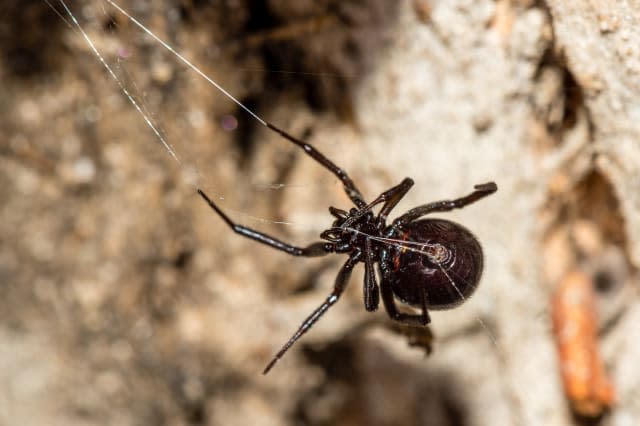Venomous spiders are invading UK homes

A mild autumn has led to a larger number of Britain's most venomous spiders invading our homes.
See also: Footballer bitten by false widow spider as he slept
See also: UK spider bite pensioner to have part of finger amputated
According to the Telegraph, the black widow's cousin, the false widow, are heading into our homes after warmer weather and a successful mating season in October.
How to spot the false widow spider
Unlike its deadly cousin, which is jet black, the false widow is brown with a cream 'skull' image on its back (just to scare us even more).
How dangerous is a false widow spider?
The simple answer is: not very. In general, a false widow spider bite will be reasonably harmless and will feel like a bee sting. Stuart Hine from the Natural History Museum, said: "I always explain the great value of spiders and how rare the event of spider bite in the UK actually is. I also always explain that up to 12 people die from wasp/bee stings in the UK each year and we do not panic so much about wasps and bees." However, on the odd occasion, some people have been known to have adverse reactions to bites. The Telegraph reports how one man, Simon John, had a severe reaction after being bitten by one at a holiday camp in Devon.
He was bitten as he slept in his caravan and, two days after returning home, developed a fever and swelling around the bite mark. An open hole then developed on his leg and the flesh began to rot. Doctors told him that if the bite had been higher and reached his groin, his organs could have shut down.
Where are false widows likely to hide?
These spiders like to be dry and warm so will often sneak into sheds and garages. And, according to the Metro, they're partial to south-facing walls. One woman in Cheltenham this week found one while dusting a lampshade in her home, according to The Sun.
Facts about the false widow spider
The species is native to Madeira and the Canary Islands from where it allegedly spread to Europe, and arrived in England before 1879, perhaps through cargo sent to Torquay.
Females range in size from about 9.5 to 14 mm in size, while males are 7 to 11mm.
Mr Hine suggests that distribution of the false widow is expected to increase northwards in the UK, due to, at least partly, mild winters in recent years.
He adds that you should apply an antihistamine cream to a bite, and visit your GP if weeping blisters or painful swelling develops over a few days.




